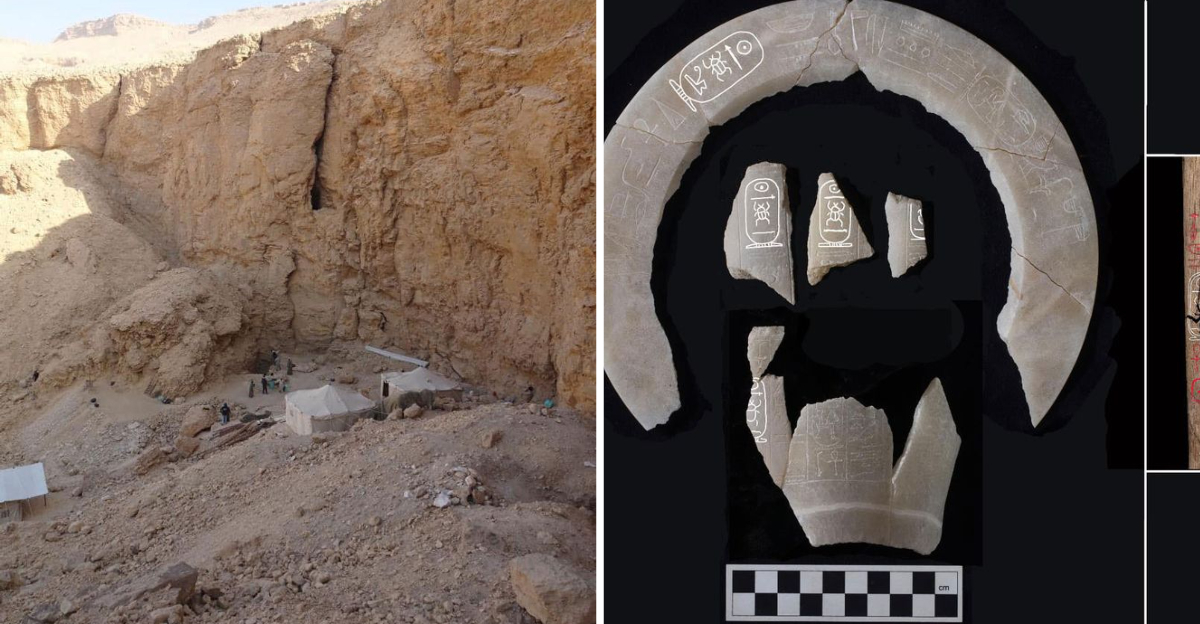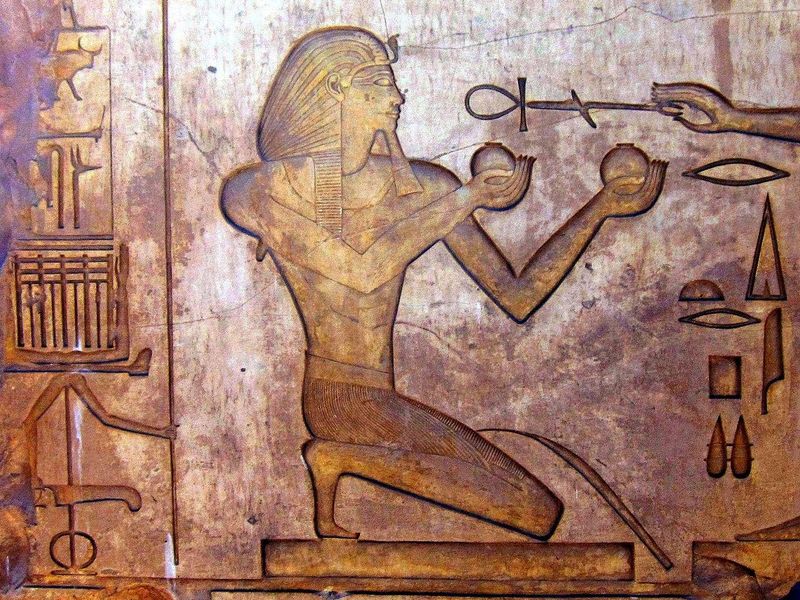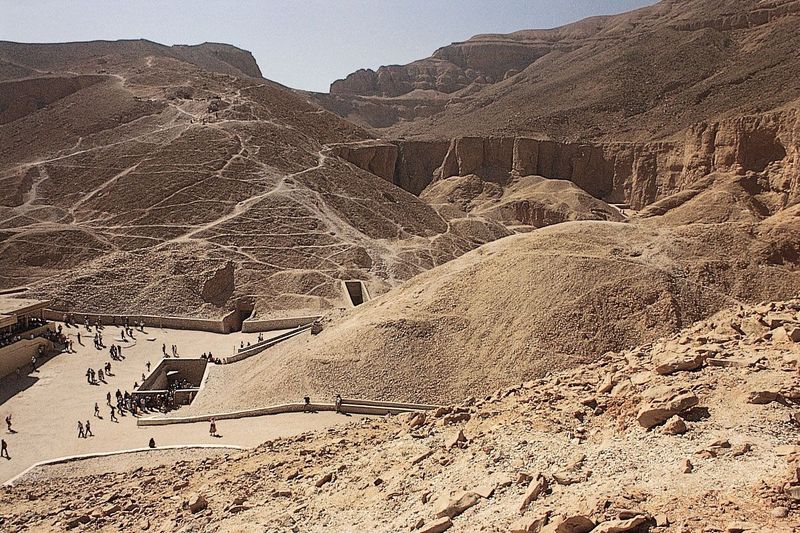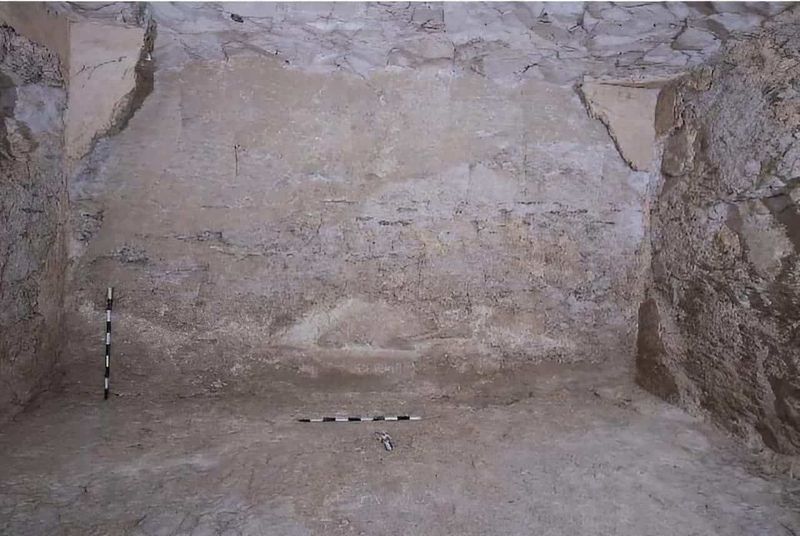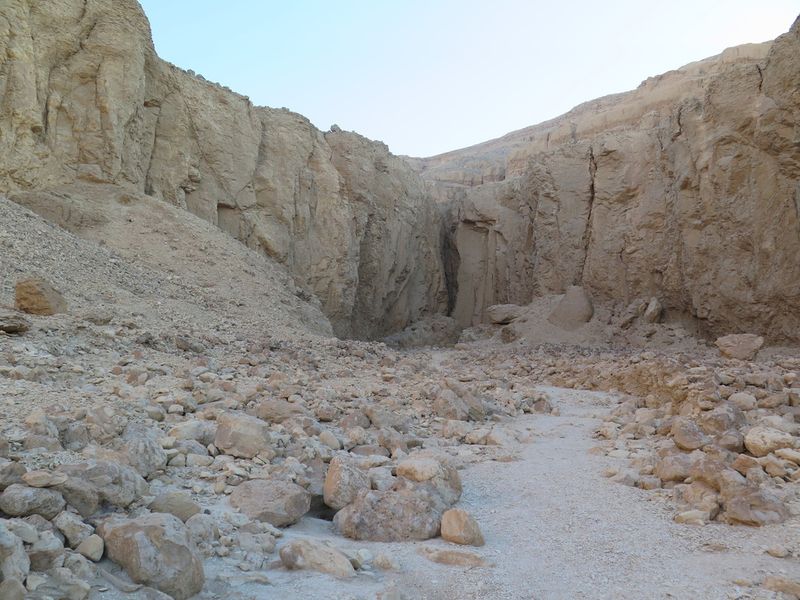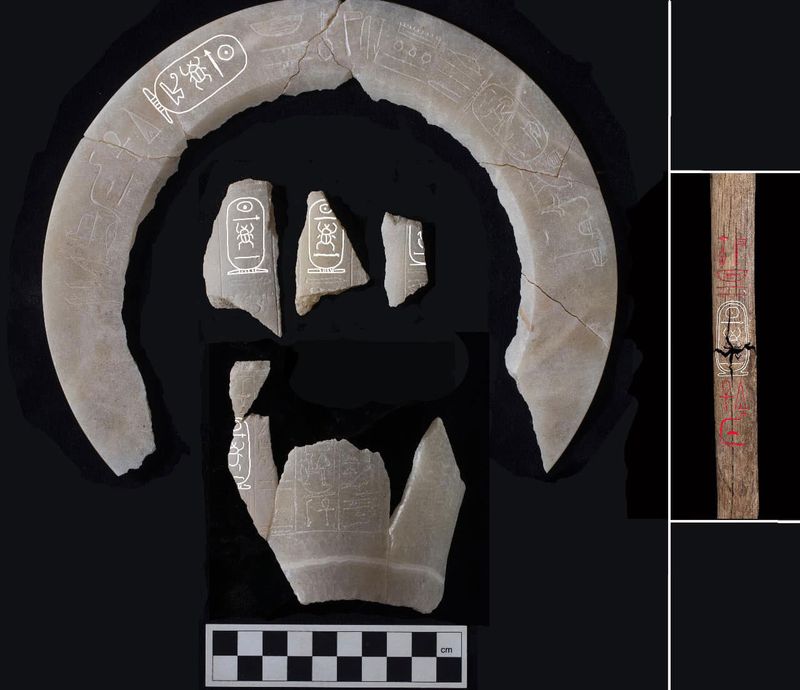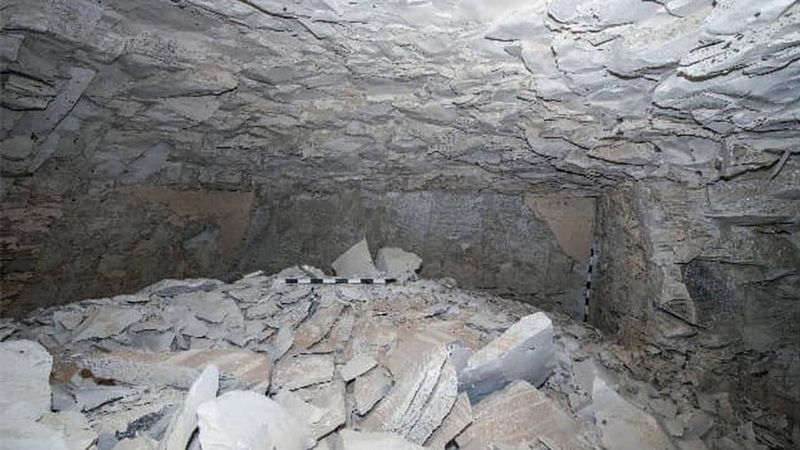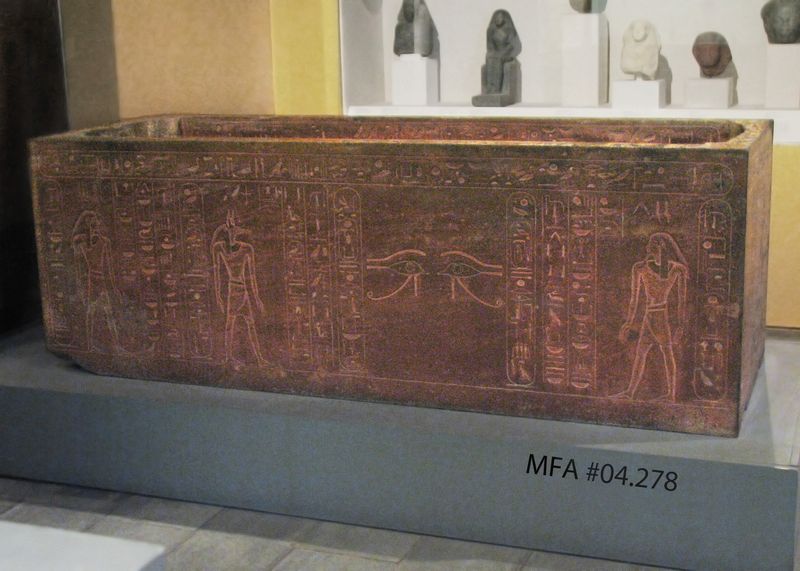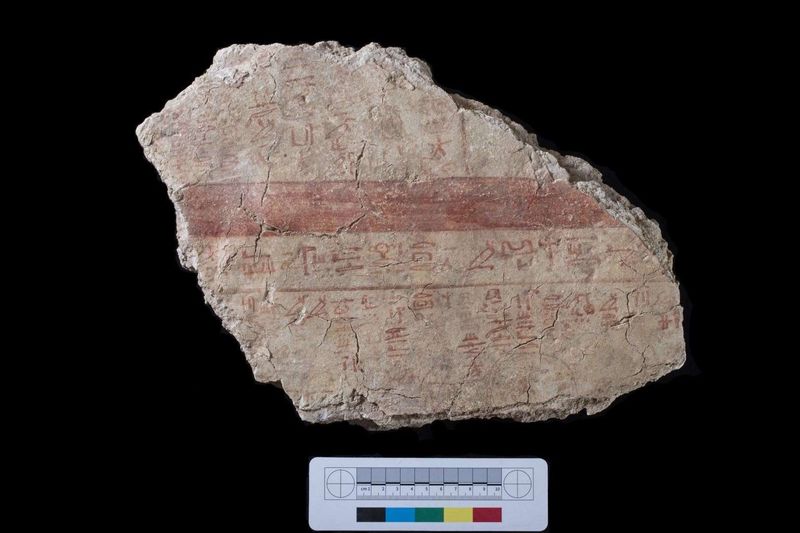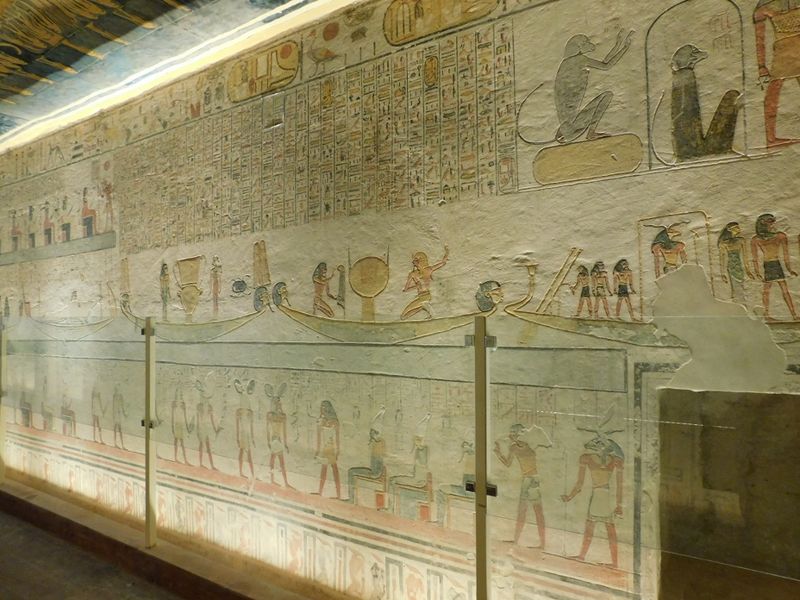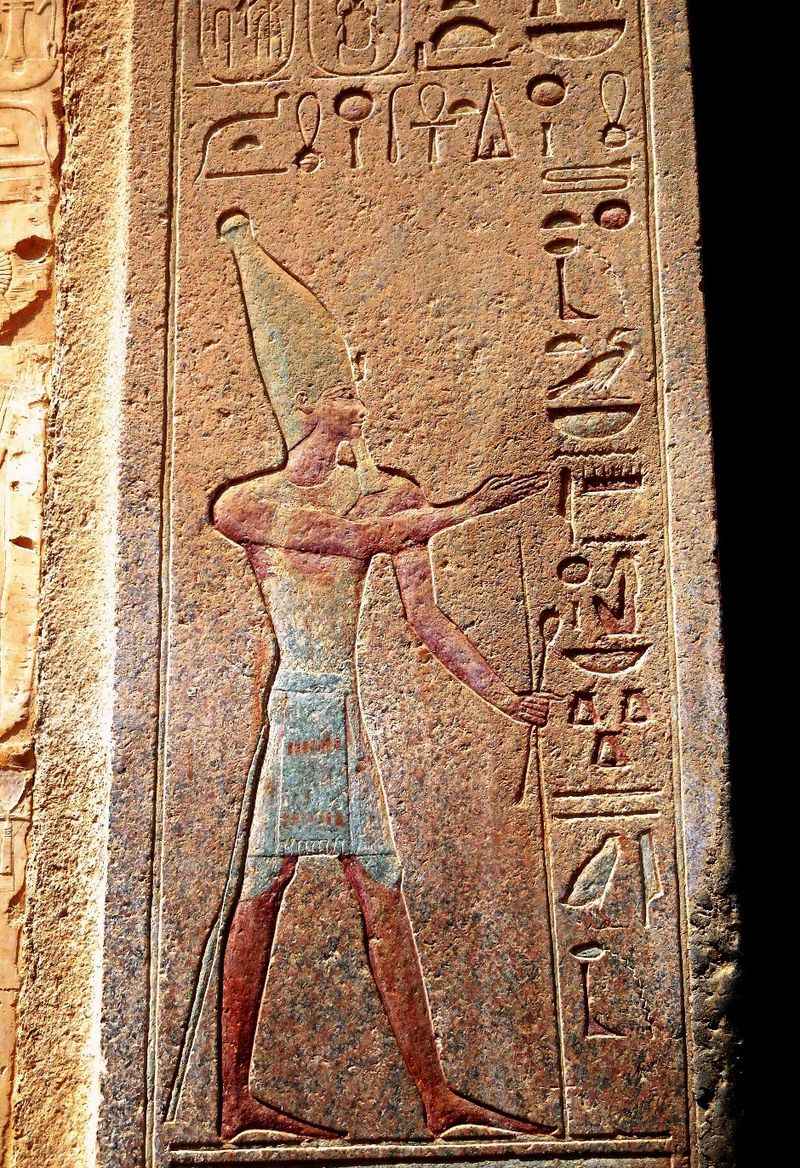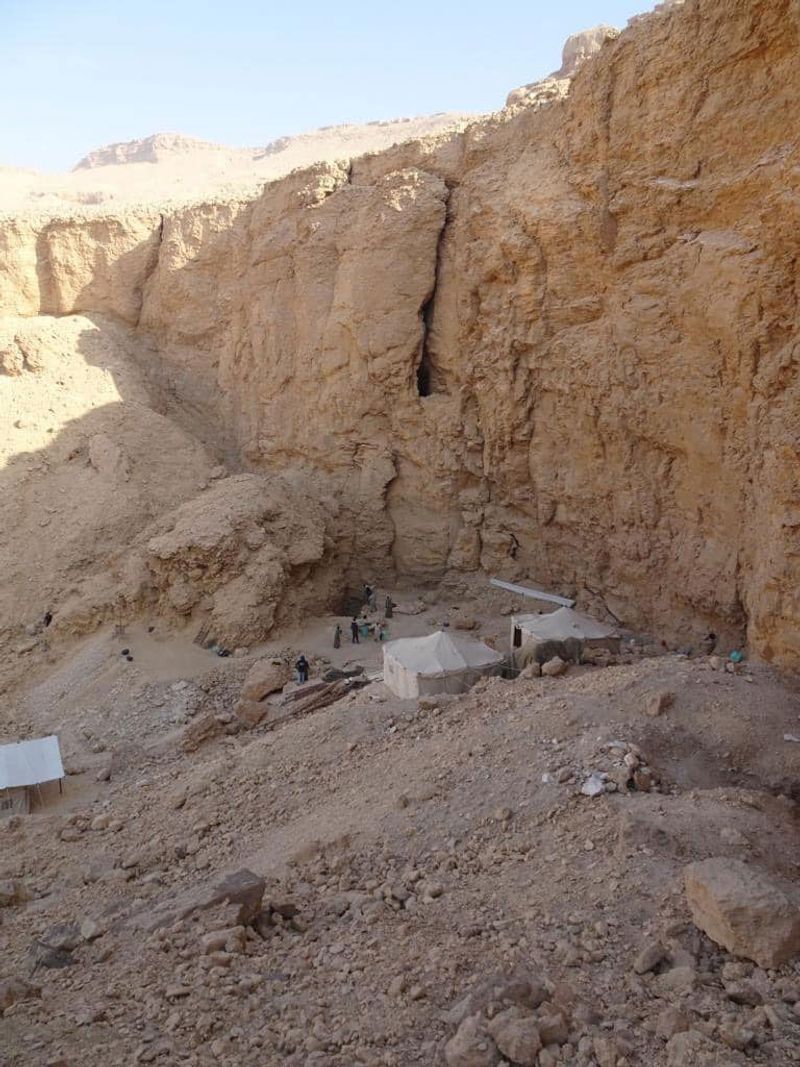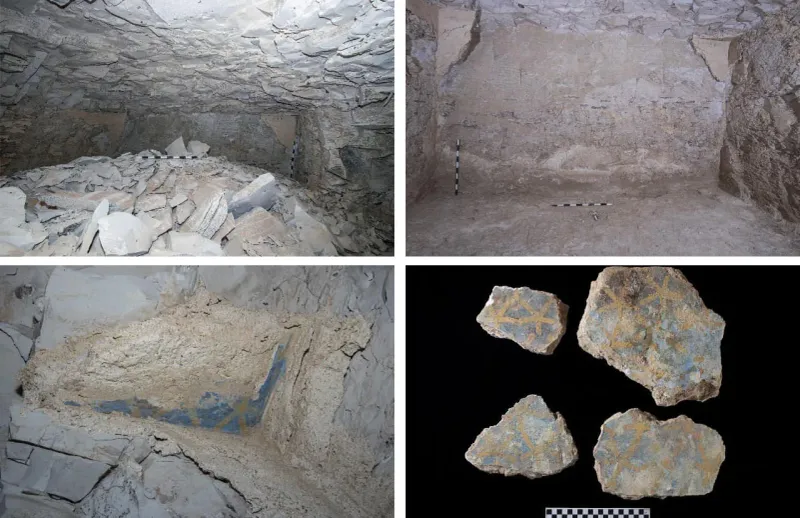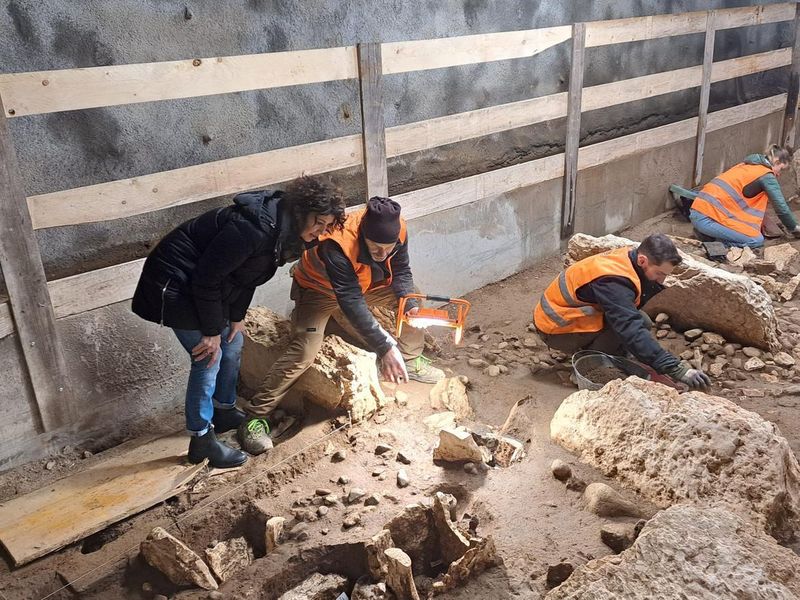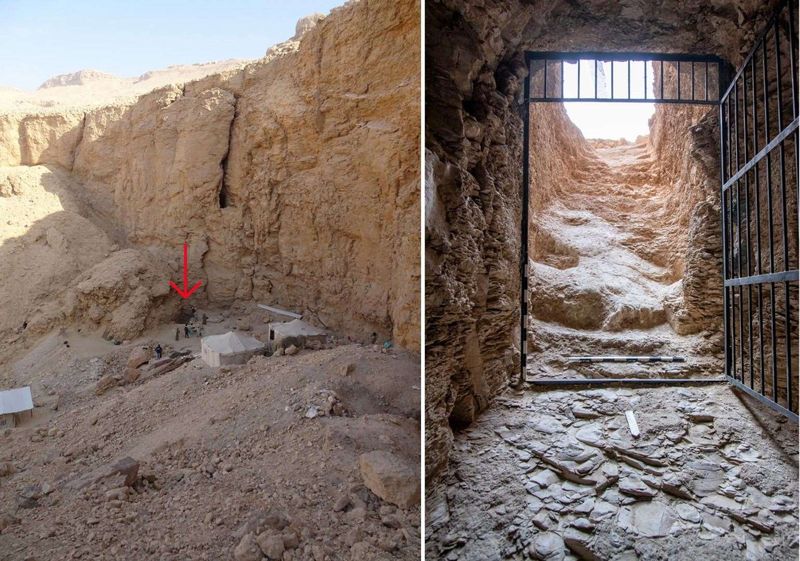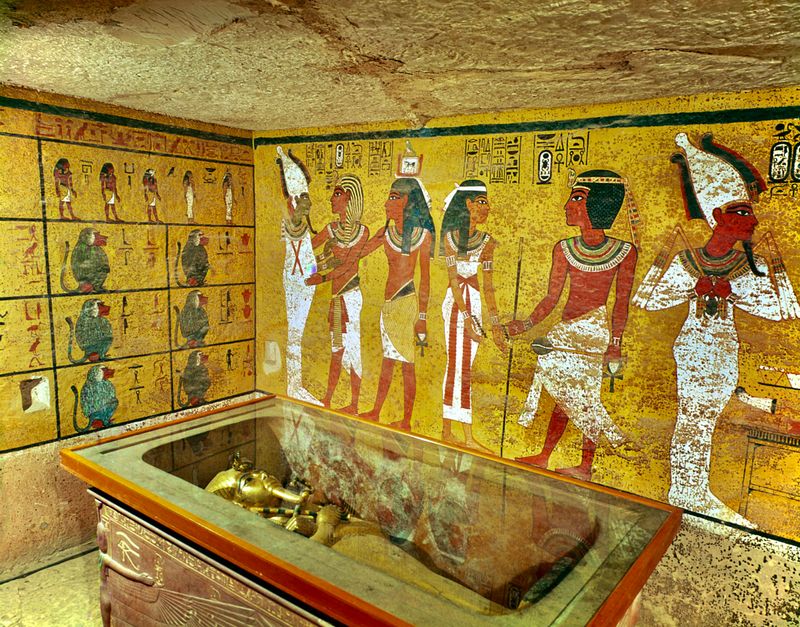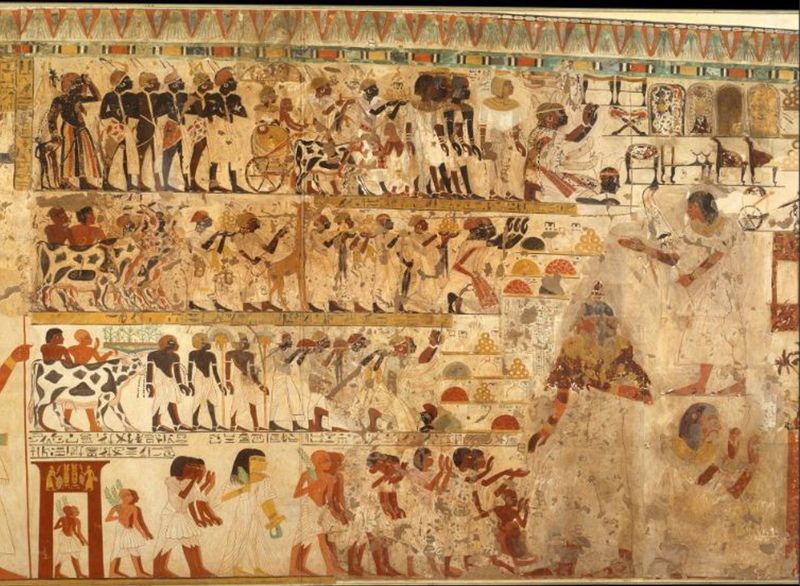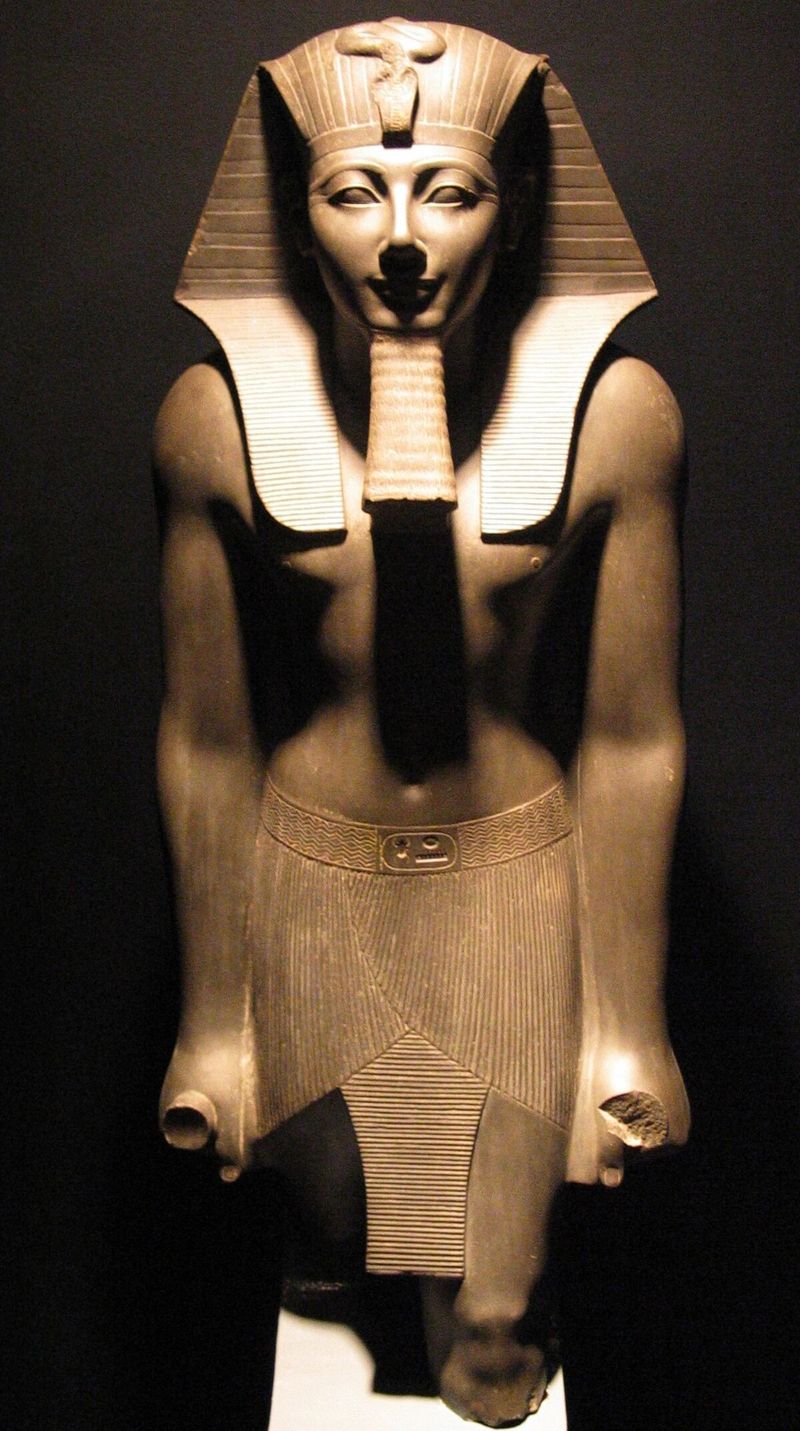The discovery of King Thutmose II’s tomb in 2022 has been hailed as the most significant archaeological find since the unearthing of Tutankhamun’s resting place a century ago. Located near the Valley of the Kings, this tomb offers unprecedented insights into Egypt’s 18th Dynasty.
A collective effort by Egyptian and British archaeologists has brought to light invaluable artifacts and fragments that have captivated public interest globally.
Despite the challenges posed by ancient flooding and subsequent looting, the excavation continues to unravel the mysteries of this enigmatic king’s reign.
Historic Discovery After a Century
In 2022, a monumental discovery was made near Luxor, Egypt, echoing the historical significance of finding Tutankhamun’s tomb a century earlier. The tomb of the ancient Egyptian King Thutmose II was uncovered, marking a pivotal moment in archaeological history. This find, resonating through the corridors of time, reflects a century-long wait for such a discovery.
The joint efforts of archaeologists have opened a new chapter in understanding ancient Egyptian royalty. This royal tomb promises to reveal secrets that have laid dormant for thousands of years, deepening our understanding of the period when Thutmose II reigned.
Location Near the Valley of the Kings
The tomb of King Thutmose II was found in Thebes, a UNESCO World Heritage Site, situated on the west bank of the Nile River. Proximity to the famed Valley of the Kings adds to its historical allure. Thebes has long been celebrated for its rich tapestry of ancient history, and this discovery further cements its status as a cornerstone of archaeological significance.
Nestled among the ancient sands, this site offers a tangible connection to Egypt’s illustrious past. Visitors to this region are now greeted with a blend of awe and curiosity as history unveils itself anew.
Collaboration Between Egyptian and British Teams
The discovery of King Thutmose II’s tomb was the result of a collaborative effort between Egyptian and British archaeologists. This partnership highlights the power of international cooperation in uncovering the mysteries of ancient history. Such collaborations foster a rich exchange of knowledge and expertise, essential for tackling the complex challenges often encountered in the field.
Teams brought together diverse perspectives and skills, amplifying the success of the excavation efforts. This unity in pursuit of historical enlightenment exemplifies the spirit of global teamwork, bridging cultures to uncover and preserve human heritage for future generations.
Initial Discovery in 2022
The entrance to the tomb of King Thutmose II was initially located in 2022. This marked the beginning of an exhilarating journey for archaeologists dedicated to unearthing Egypt’s royal past. The initial discovery sparked widespread excitement, prompting further exploration and excavation.
As the sands of time were brushed away, the significance of the site became increasingly apparent. Each artifact uncovered told a story of its own, adding layers of depth to the narrative of Thutmose II’s reign. The meticulous work undertaken since then continues to unveil insights into this fascinating epoch.
Identification Through Artifacts
Within the tomb, archaeologists discovered fragments of alabaster vessels inscribed with the name of Thutmose II. These artifacts played a crucial role in confirming the identity of the tomb’s occupant. The inscriptions provided a direct link to the past, offering tangible proof of Thutmose II’s reign.
Each fragment, delicately preserved through millennia, serves as a testament to the craftsmanship and culture of ancient Egypt. These artifacts not only affirm the tomb’s ownership but also enrich our understanding of the ceremonial practices of the time. The inscriptions remain a vital piece of this historical puzzle.
Tomb’s Poor Condition
The tomb of King Thutmose II was found in a state of poor preservation, primarily due to ancient flooding that had caused extensive damage. The ravages of time had taken their toll, with sections of the tomb and its artifacts bearing the scars of centuries.
Despite these challenges, the discovery remains a significant milestone. The condition of the tomb provides insights into the environmental factors that have influenced preservation over time. Archaeologists are faced with the arduous task of delicately handling and preserving what remains, using modern technology to piece together the past.
Relocation of the Mummy
Interestingly, the mummy of Thutmose II was actually discovered in the 19th century, in a separate location from his tomb. This relocation suggests that the body was moved, possibly due to looting, a common threat to ancient burial sites. Such historical disruptions highlight the challenges faced by archaeologists and historians alike in preserving the integrity of ancient sites.
The mummy’s displacement underscores the narrative of these ancient tombs, where theft and environmental factors played significant roles. This revelation adds another layer of complexity to the ongoing study and preservation of Egypt’s ancient history.
Artifacts Confirming the Tomb’s Owner
In addition to vessel fragments, sections of religious texts referencing Thutmose II were uncovered, further confirming the tomb’s original owner. These texts provide invaluable context, offering glimpses into the religious and cultural landscape of the time. The inscriptions are not merely decorative but serve as records of the king’s reign and his place within ancient Egyptian society.
Each piece of text adds depth to our understanding of Thutmose II’s rule and the religious beliefs that shaped his era. Such findings are pivotal in reconstructing the historical and cultural narratives of ancient Egypt.
Significance of the Discovery
The discovery of Thutmose II’s tomb is hailed as one of the most important archaeological finds of recent history. It sheds light on the 18th Dynasty, offering insights into a period marked by political and cultural change. The tomb’s unearthing provides a rare opportunity to study the craftsmanship, religious practices, and daily life of ancient Egypt.
Each artifact recovered adds to the tapestry of history, allowing scholars to piece together narratives long forgotten. This discovery not only captivates the archaeological community but also intrigues the public, rekindling interest in the mysteries of ancient Egypt.
Reign of Thutmose II
King Thutmose II reigned over Egypt between 1493 BC and 1479 BC, a period marked by notable achievements and challenges. He was married to the eminent Queen Hatshepsut, whose own reign left an indelible mark on history. Thutmose II’s rule was characterized by efforts to maintain
Egypt’s power and influence in the region. Despite facing potential threats from both internal and external forces, his reign is remembered for its contributions to Egypt’s cultural and political landscape. This period of his rule provides a fascinating context for examining the complexities of ancient Egyptian leadership.
Efforts to Preserve the Tomb
Despite the tomb’s poor condition, efforts are underway to preserve and study the remains of Thutmose II’s burial site. Archaeologists and conservators are employing cutting-edge technology to stabilize the site and protect the remaining artifacts. This endeavor is not only about preservation but also about unraveling the stories contained within the tomb.
Detail-oriented work is essential to ensure that the legacy of Thutmose II is preserved for future generations. The ongoing project reflects a commitment to safeguarding history, allowing us to continue exploring and learning from the past through these ancient remnants.
Insights into 18th Dynasty Burial Practices
The tomb of Thutmose II offers invaluable insights into the burial customs and architectural styles of Egypt’s 18th Dynasty. The layout and contents of the tomb reveal the ceremonial practices that accompanied royal burials. Studying these elements allows archaeologists to reconstruct the beliefs and traditions that underpinned this era.
Each artifact and structural detail contributes to our understanding of how royalty viewed the afterlife. These insights not only illuminate the past but also enrich our appreciation of the cultural heritage that has been passed down through centuries, providing a window into ancient Egyptian civilization.
Challenges Faced During Excavation
The excavation of Thutmose II’s tomb presented numerous challenges, primarily due to its deterioration from ancient floods. Archaeologists had to navigate the complex and delicate task of excavating a site that had been compromised by physical and environmental factors. This required innovative techniques and tools to prevent further damage while allowing thorough exploration.
The team’s perseverance and expertise were crucial in overcoming these obstacles, ensuring the integrity of the site. These challenges underscore the broader difficulties faced in archaeological endeavors, where patience and precision are essential for successful excavation and preservation.
Potential for Further Discoveries
The discovery of Thutmose II’s tomb has opened the door to potential further discoveries. Ongoing excavations may yield additional artifacts or information, offering deeper insights into the reign of this ancient king. Each layer of earth removed holds the promise of unveiling new aspects of history.
The continued exploration is not just about what has been found but also about the potential stories yet to be told. This ongoing work reflects the enduring allure of ancient Egypt, where every artifact and structure adds to the intricate mosaic of its historical narrative.
Comparison to Tutankhamun’s Tomb
The discovery of Thutmose II’s tomb invites comparisons to that of Tutankhamun. While Tutankhamun’s tomb was found largely intact, Thutmose II’s tomb suffered from looting and environmental damage. This contrast presents unique challenges and insights for archaeologists.
The differences in preservation state provide varying perspectives on ancient Egyptian burial practices and the impacts of time and human interference. These tombs, while distinct, both contribute significantly to our understanding of Egypt’s past. By studying these sites, archaeologists gain a broader understanding of the cultural and historical context of ancient Egypt.
Public Interest and Exhibition Plans
The discovery of Thutmose II’s tomb has captured significant public interest, with plans to eventually exhibit the findings in museums. This will provide a unique opportunity for the public to engage with ancient history up close.
Exhibitions are anticipated to showcase the artifacts and tell the story of the tomb’s discovery and significance. Such events aim to educate and inspire visitors, fostering a deeper appreciation for ancient Egypt’s rich history. The excitement surrounding this find underscores the enduring fascination with Egyptology, as people from around the world are drawn to its timeless mysteries.
A Milestone in Egyptology
The discovery of Thutmose II’s tomb marks a milestone in the field of Egyptology, highlighting the enduring allure and mysteries of ancient Egypt. This significant find reflects the relentless pursuit of knowledge and understanding within the archaeological community.
It exemplifies the potential for uncovering hidden chapters of history even today. The excitement generated by this discovery resonates not only within academic circles but also among the general public. It serves as a reminder of the rich tapestry of human history waiting to be explored. Such milestones continue to inspire future generations of archaeologists and historians.
